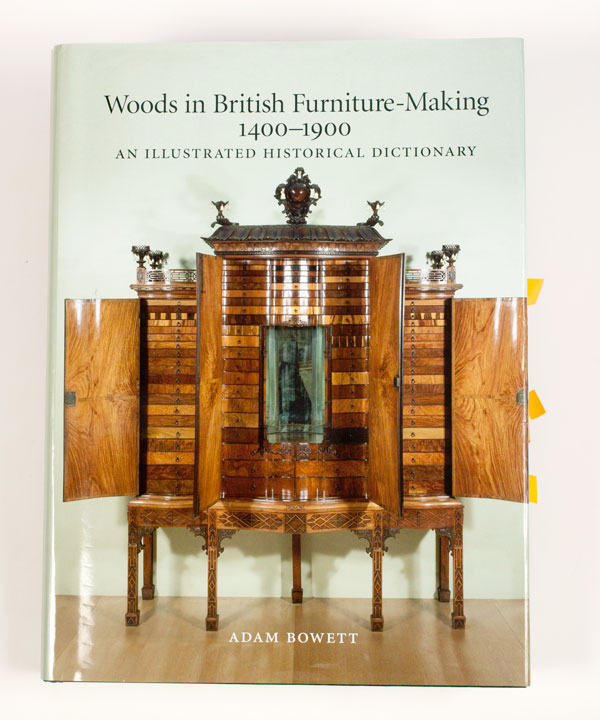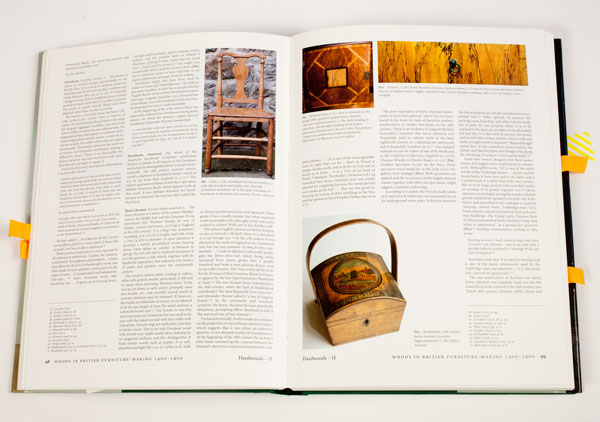We may receive a commission when you use our affiliate links. However, this does not impact our recommendations.
I try to keep Adam Bowett’s book “Woods in British Furniture-Making 1400-1900” closed tight as much as possible. That’s because every time I open it, I lose at least an hour of my day reading a section of the book that I hadn’t yet discovered.
“Woods in British Furniture-Making 1400-1900” (Oblong Creative, 2012) is a massive text in every sense. Measuring 9-3/4” x 13” with 360 pages of extensively footnoted text and hundreds of photos, it is not a quick read for the beach. Bowett arranged the book like a dictionary for the most part, implying that it is intended as a reference. But its dictionary-like structure and title, “Woods in British Furniture-Making,” are misleading.
Because the British Empire was so massive, “Woods in British Furniture-Making” is actually a history of the world as told through furniture woods. Every entry is like a short story of the species as told from a furniture-maker’s – rather than a botanist’s – perspective. All of the species you use in your shop are in there, including the oak, cherry and walnut of North America. Plus all the other species you have heard about and wondered about.
What makes “Woods in British Furniture-Making” more special than a Wikipedia entry on a species is that Bowett’s original research from primary sources, such as trading records, dispels many of the myths about certain species. Do you think that Cuban mahogany is special? Read the book. Do you know what “wainscot” is? You’re probably mistaken. Read Bowett. Have you heard about the legendary English oak? You might want to read Bowett.
When “Woods in British Furniture-Making” was first published, I didn’t think it was something I needed. It is an expensive book it and seemed quite narrow in topic. But a (very nice) friend bought a copy and sent it to me, insisting I’d like it. I’ve since bought two copies myself and given them to woodworking friends.
After only a year of use, my copy is getting dog-eared and filled with little book markers. It is never far from where I am sitting when I am writing, drawing furniture or reading other books on woodworking.
You can usually find “Woods in British Furniture-Making” for about $170. If you are hesitant to spend that kind of money on a book, check to see if your local library has a copy you can check out. Spend a couple of days with it, and I think you’ll be hooked.
— Christopher Schwarz
Here are some supplies and tools we find essential in our everyday work around the shop. We may receive a commission from sales referred by our links; however, we have carefully selected these products for their usefulness and quality.











Looks like a great book! I just wonder what I need to do to be one of those friends of Chris Schwarz who could get a great gift like this!
I received this book as a gift as well. I agree it’s an absolutely beautiful book and a fascinating read.